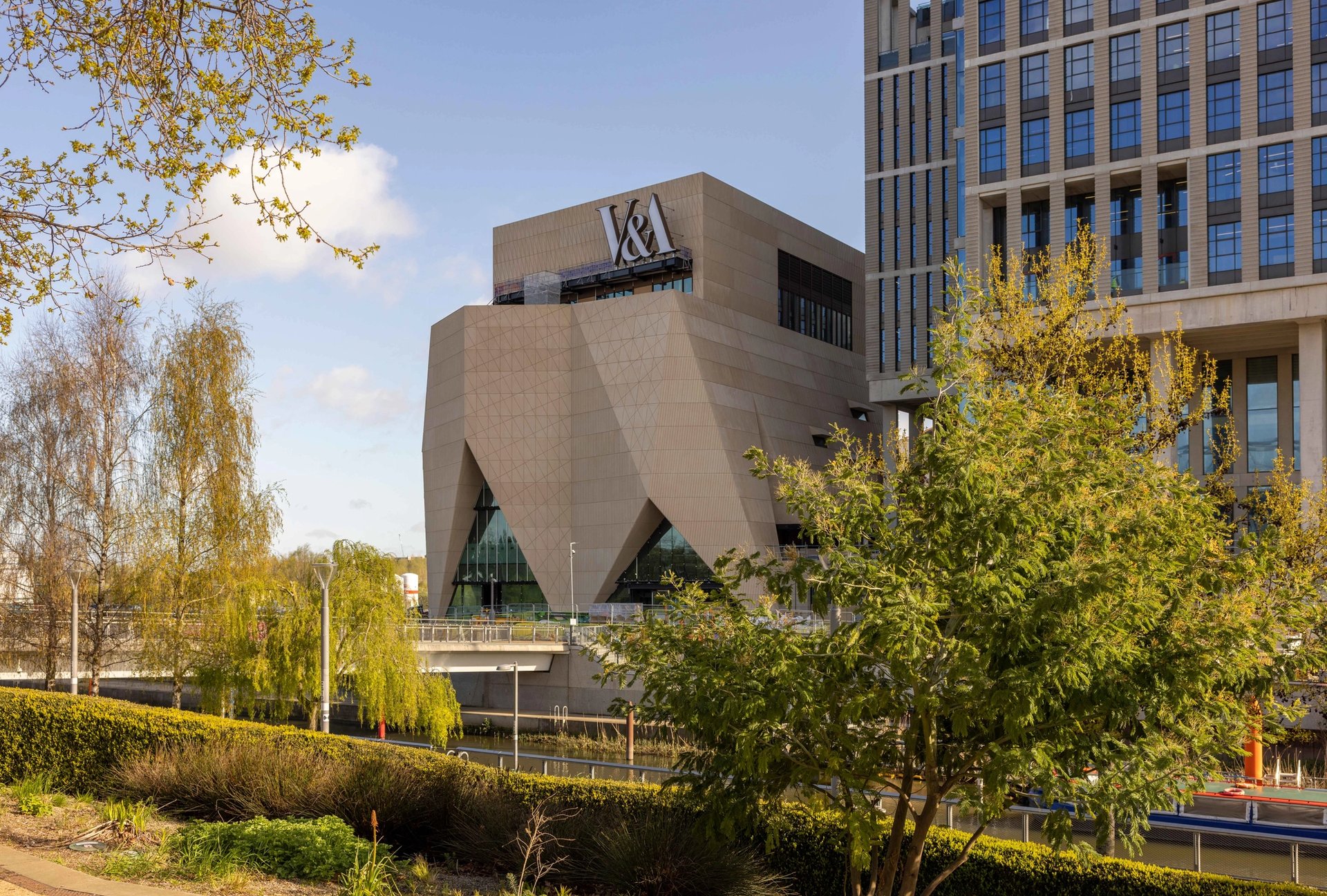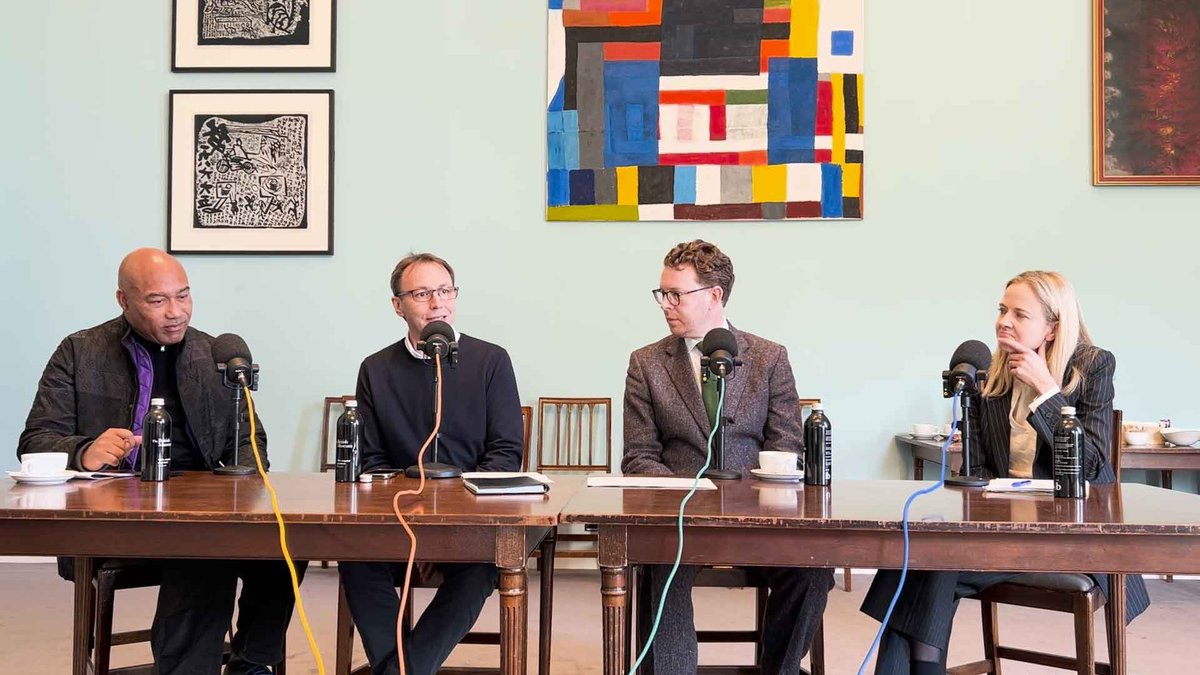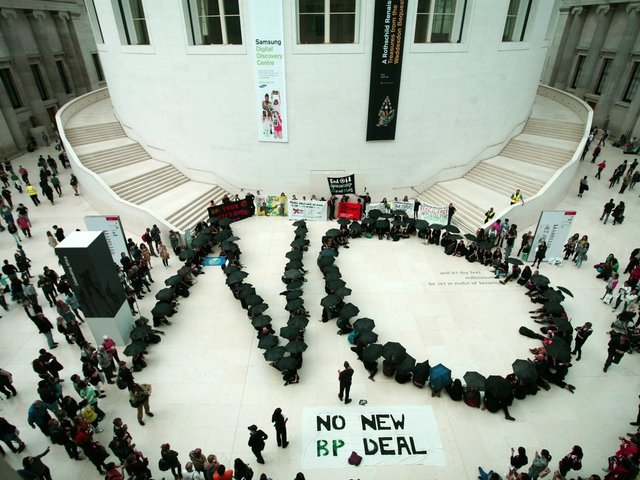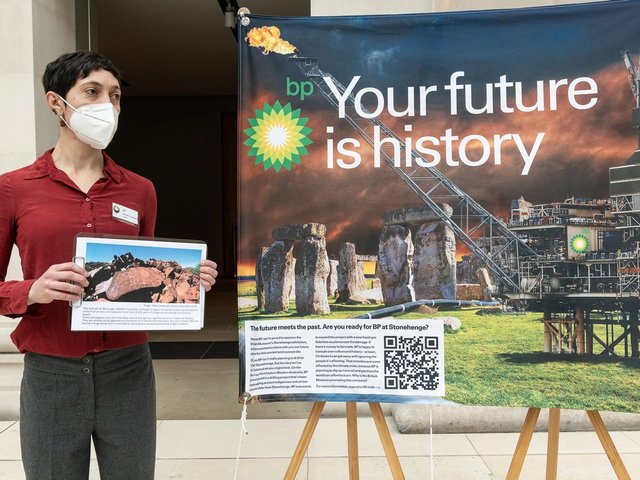The directors of three leading London cultural institutions have emphasised the importance of museums as places of healing during turbulent times at a roundtable discussion held this week. The conversation, between the British Museum's Nicholas Cullinan, Tate Modern's Karin Hindsbo and V&A East's Gus Casely-Hayford addressed the challenges facing museums to meet this mission and the need for innovation in the face of growing protests, political unrest and a climate crisis.
All of the speakers on the roundtable, hosted on The Art Newspaper’s Week in Art podcast to mark its 300th episode, are fresh to their positions or—in the case of Casely-Hayford—leading a brand-new institution (due to open in spring 2026). They spoke of the changes their organisations and the sector more widely had gone through in recent years, off the back of the Covid pandemic. “One is that we have a much more local audience now actually, which we embrace,” Hindsbo told the podcast's host Ben Luke. And of fundamental questions too. “I think what’s interesting is: what should normal look like for museums [now]?”, Cullinan said.
British cultural institutions are at a turning point, with a new government in place and a host of freshly appointed directors. The connection between museums and empire came under increased scrutiny under the previous, Conservative administration—which fought to “retain and explain” sculptures tied to colonialism and slavery.
While the current Labour government’s plans for this issue—and others, such as the return of objects to their countries of origins—are not clear yet, shifts in policy are expected. And for Casely-Hayford, the signs of progress are already evident.
“I think there have been times when museums have been places of great pain, for many of the people that I love, and I would include myself as well within that,” he said. “I think we have got to a point where we've done that critical thing of at least acknowledging the issue, and I think that has opened the possibility for discourse.”
Evidence of this discourse is apparent in the work these three museums are doing: the Guyanese-British artist Hugh Locke’s current exhibition at the British Museum, for example, specifically digs into the connections between the institution’s collection and imperial power. At Tate Modern, meanwhile, Hindsbo has announced a major initiative to acquire and display Indigenous art. The key, said Cullinan, “is that we can be honest about these things, and in doing so, hopefully find our way towards a more equitable future.”
For many, however, progress has been too slow—on restitution and addressing colonial history, but also other key issues, such as the reliance institutions have on oil and pharmaceutical companies. Protests, by environmental groups such as Just Stop Oil, have been making headlines at an increasing rate in recent months, leading to drastic action on the part of museums, including the decision by London’s National Gallery to ban visitors from taking any liquids into its galleries.

A protest led by the activist group BP or Not BP? at the British Museum
Photo: Ron Fassbender. Courtesy of BP or not BP?
Such decisions have created tensions. Can museums be spaces, Luke asked, for open, honest debate while also enacting greater control? “They have to, I would say,” Hinbso replied. “We have a responsibility for our collection and taking care of that collection for future generations.”
Casely-Hayford, emphasising the need to communicate clearly and collaboratively with audiences, added: “This is about us together as a human race conserving the very best of us. And if that might mean that we can't take liquids into spaces, I think then that may be a necessary and understandable sacrifice."
The bigger picture
The balancing acts faced by cultural institutions take on an almost existential dimension when it comes to funding, a topic all three directors spoke passionately about. Of them the British Museum faces perhaps the most acute issue of this kind, requiring what is estimated could reach a billion pounds to complete its masterplan—aimed at refurbishing and reorganising the permanent collection, and fixing structural problems such as its leaking roofs.
While the government is providing some of the funds for this project, the British Museum has needed to turn to private sources as well, including BP. The museum has been the target of years of activism over its partnership with the oil giant, yet recently, it was confirmed that the company would be giving £50m towards the masterplan, the largest ever corporate donation to a UK museum.
Cullinan, referencing the fact that the British Museum was facing “critical infrastructure failure”, used the roundtable to appeal for public understanding. “When you have to raise hundreds of millions of pounds to [stop] that, you need to have a very good reason for turning down £50m. Assuming that the taxpayer is not going to foot the entire bill, where else is the money to be found? It's great to have a critique and it's great to have concerns, but you also need to go a step further and have an alternate solution and suggestion too.”
He also emphasised the museum’s work to address the climate crisis, including through its planned Energy Centre, which will be designed to replace the use of fossil fuels through low-carbon technologies.
All three directors are thinking about the bigger picture. Casely-Hayford, emphasising the importance the local community will play at V&A East, says that being a new institution provides many opportunities for innovation on the climate. Responding to a question about the recent government budget, he adds that all three museums present “are adapting to the particular challenges of this moment in ways which are sector leading and also potentially sector reshaping.”

V&A East is due to open in 2026
Photo: Peter Kelleher © Victoria & Albert Museum, London
But he notes that “there are many regions [across the globe] that are much more challenged than us”. The other pannelists concur, referencing the need to look past London. “In the future, if we don't support the medium size institutions or the artists, for that matter, what are we going to do in 20 years?” Hindsbo adds.
They come together again on a fundamental point: that UK museums, in the 21st century, still have much to offer.
“You know, politics is so kind of caustic, so problematic, so difficult. You open a newspaper, and it is very, very difficult to not feel in some way kind of upset,” says Casely-Hayford.
“That is another area in which the arts are so good. There are the things to feel optimistic about: the spaces within which we can have conversations about these difficult things [and] actually feel that we can make some progress. I feel enormously proud of our sector in not just being part of that but I think actually brokering, pioneering in that space with real emotional intelligence.”
- Listen to the full conversation here or wherever you get your podcasts




